The PLAC® Test Clearly Identifies Active Cardiovascular Inflammatory Disease
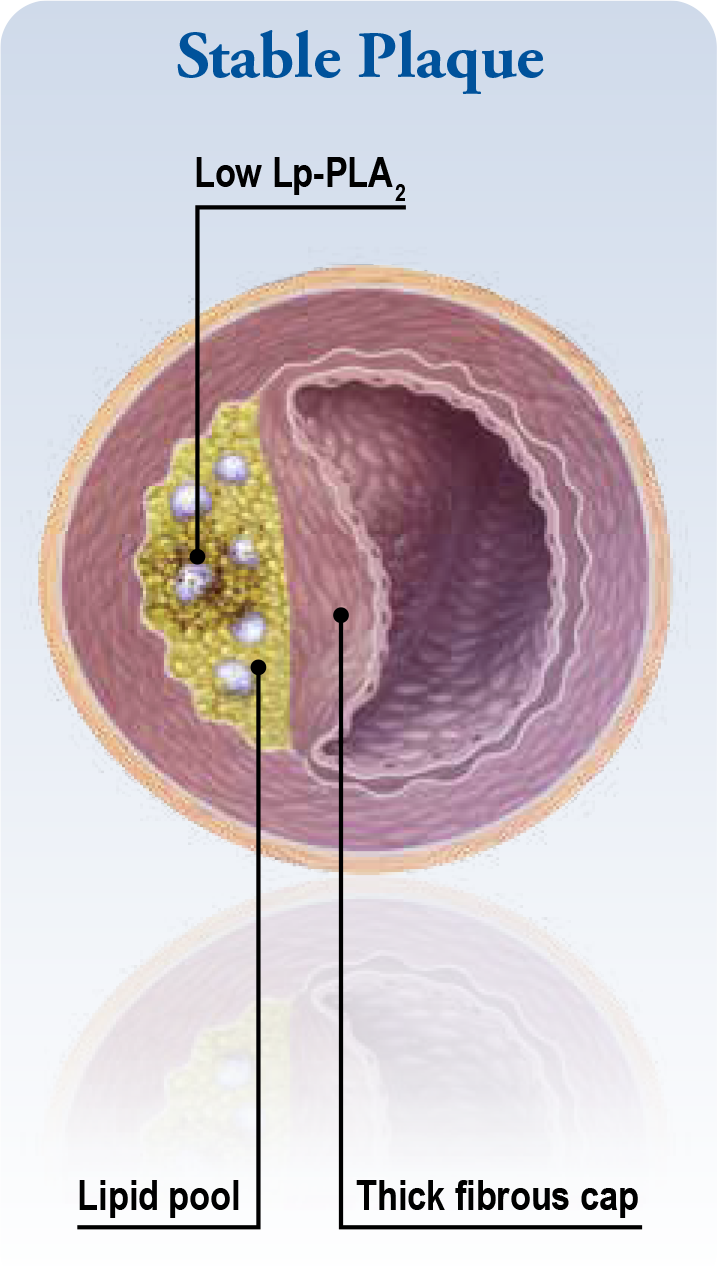
Cholesterol causes a fatty deposit called plaque that builds up inside the walls of the arteries.
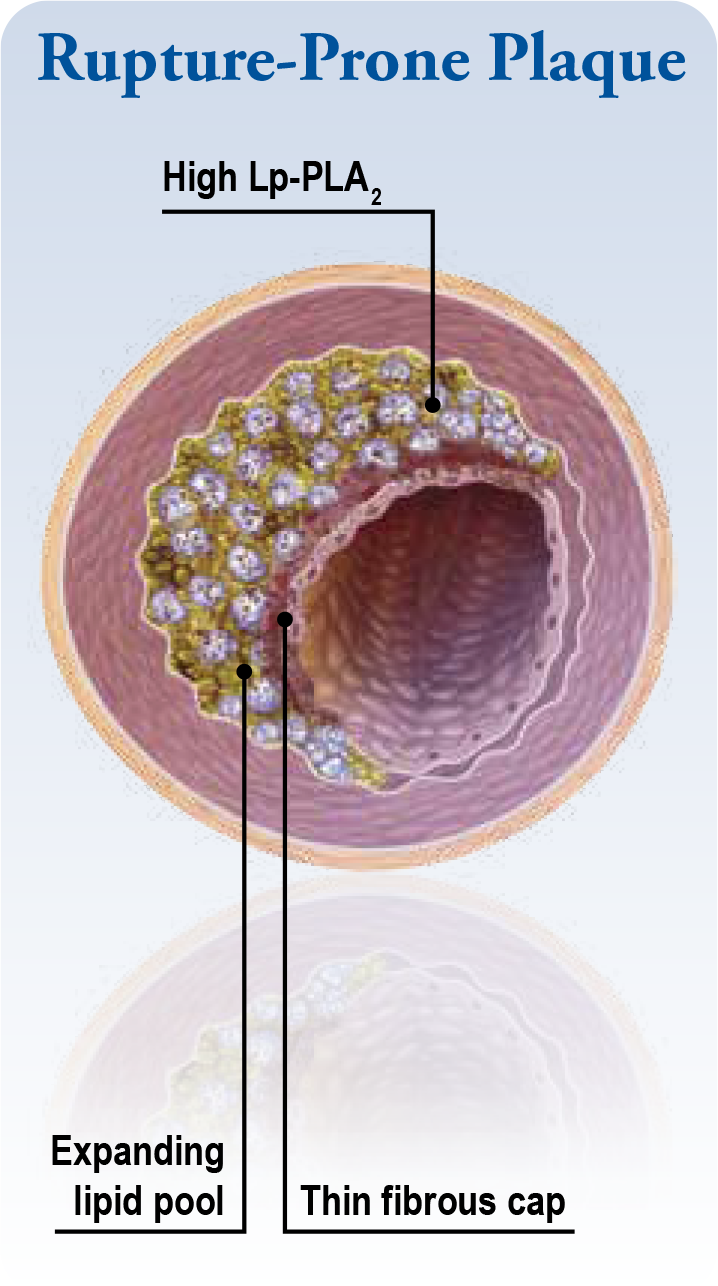
When arterial walls become inflamed, the enzyme Lp-PLA2 is produced within the plaque.
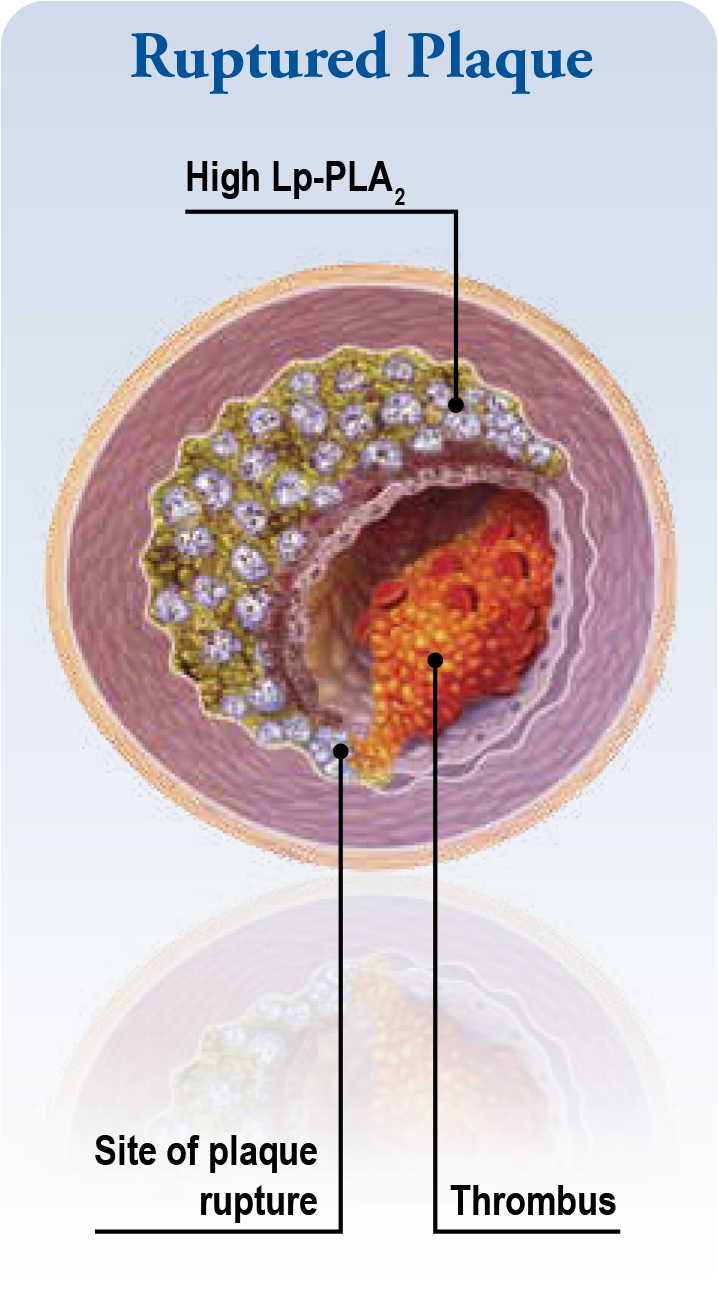
If the amount of Lp-PLA<sub>2</sub> is high, the plaque is more likely to rupture through the inside lining of the artery into the bloodstream, leading to a dangerous bloodclot that could result in heart attack or stroke1
Coronary Heart Disease Tests
Inflammation Assays
- Lp-PLA2
- Fibrinogen
- Homocysteine
- HsCRP
- Myeloperoxidase*
*For Research Use Only
Lipid Assays
- APO A-1
- APO B
- Cholesterol
- HDL
- LDL
- Lp(a)
- Triglycerides
Applications Available for Clinical Chemistry Analyzers
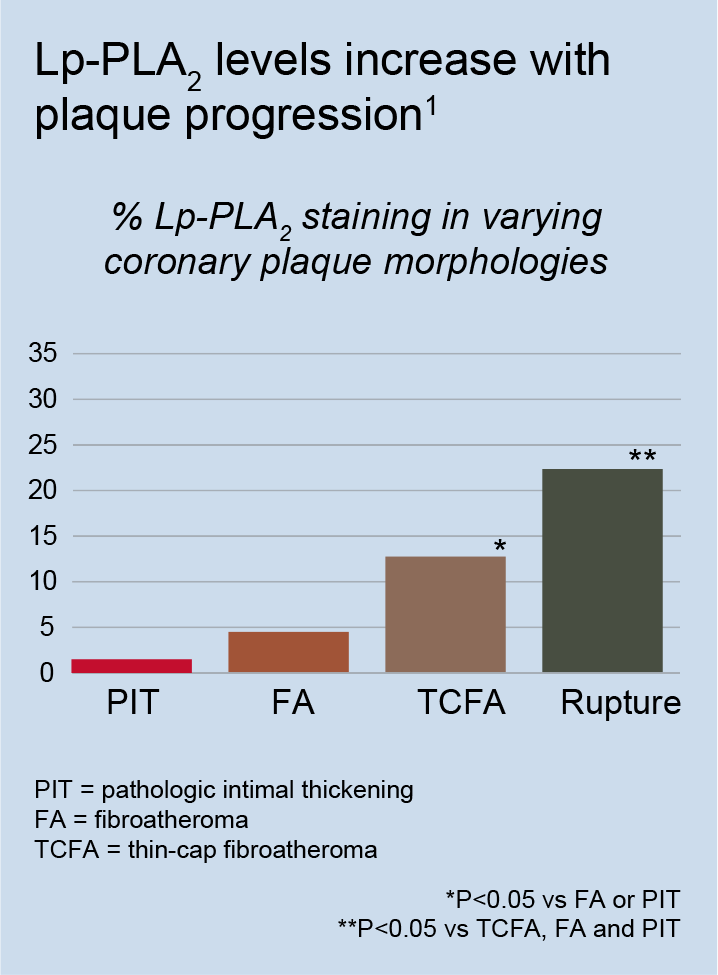
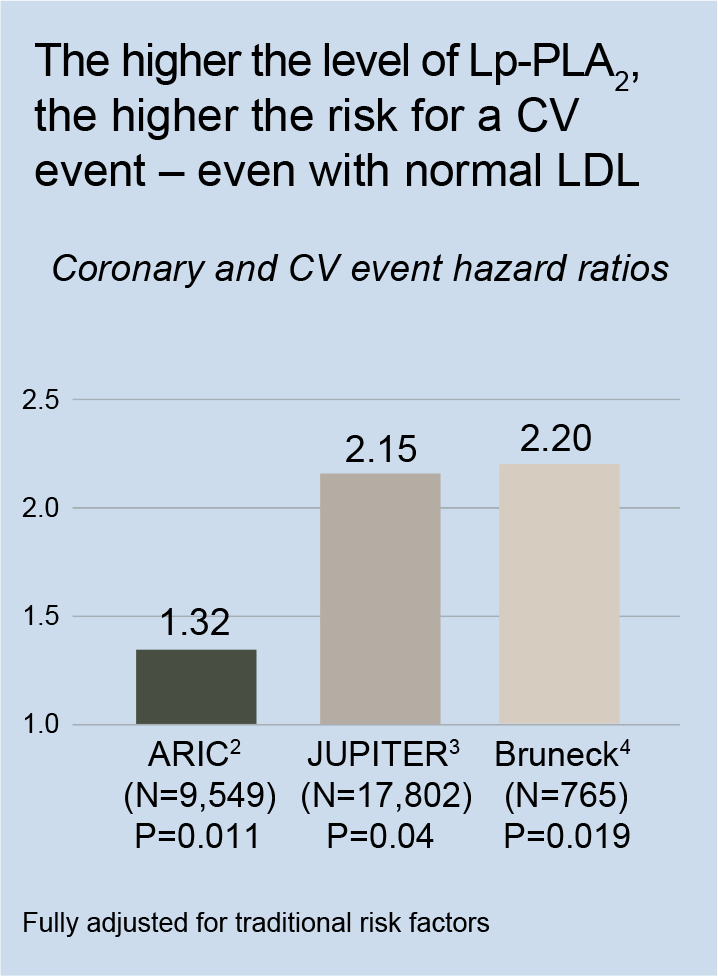
ASSOCIATION OF LP-PLA2 AND CARDIOVASCULAR EVENTS
Coronary atherosclerosis is by far the most frequent cause of ischemic heart disease, and plaque disruption with superimposed thrombosis is the main cause of the acute coronary syndromes of unstable angina, myocardial infarction and sudden death.2, 7
In a large cohort of patients hospitalized with coronary artery disease events, nearly 50% had admission LDL levels less than 100 mg/dL.6
The PLAC® Test for Lp-PLA2 Activity is a strong and independent risk factor.
HR BY RISK FACTOR7
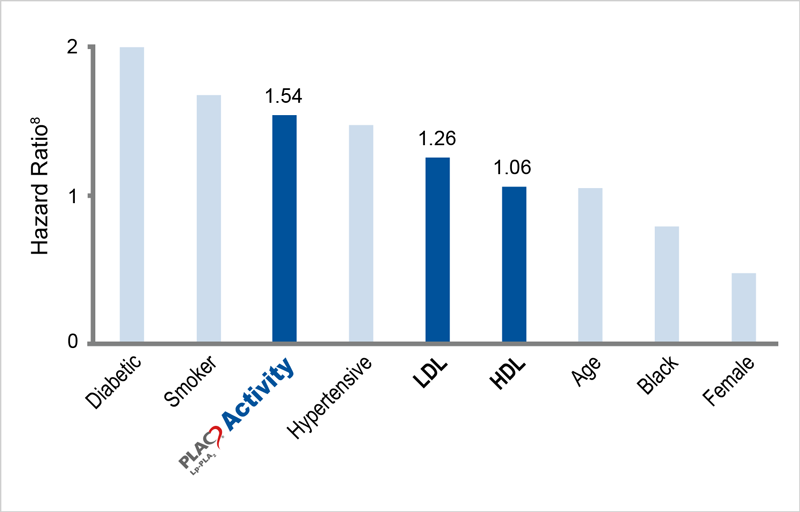
In a REGARDS multicenter sub study, high Lp-PLA2 Activity was more closely associated with outcome than high LDL and low HDL. Only status of diabetes or smoking was more closely associated with events.8
1. Kolodgie FD, Burke AP, Skorija KS, et al. Lipoprotein-associated phospholipase A2 protein expression in the natural progression of human coronary atherosclerosis. Arterioscler Thromb Vasc Biol. 2006;26(11):2523-2529.
2. Hoogeveen, R., et al. Lipoprotein-Associated Phospholipase A2 Activity and Risk for Coronary Heart Disease and Stroke: The ARIC Study. ATVB 2011.
3. Ridker, P. M., et al. Relationship of lipoproteinassociated phospholipase A(2) mass and activity with incident vascular events among primary prevention patients allocated to placebo or to statin therapy: an analysis from the JUPITER trial. Clin Chem 2012;58(5): 877-886.
4. Tsimikas, S., et al. Lipoprotein-associated phospholipase A2 activity, ferritin levels, metabolic syndrome, and 10-year cardiovascular and noncardiovascular mortality: results from the Bruneck study. Eur Heart J. 2009;30(1): 107-115.
5. Falk E, Shah PK, Fuster V. Coronary plaque disruption. Circulation. 1995; 92:657-671.
6. Sachdeva A, Cannon CP, Deedwania PC, et al. Am Heart J. 2009; 157(1):111-117.e2.
7. Data on file.
8. 3rd Annual American Society for Preventative Cardiology Cardiovascular Disease Prevention Conference, 2015. Symposium of REGARDS Lp-PLA2 Substudy.

